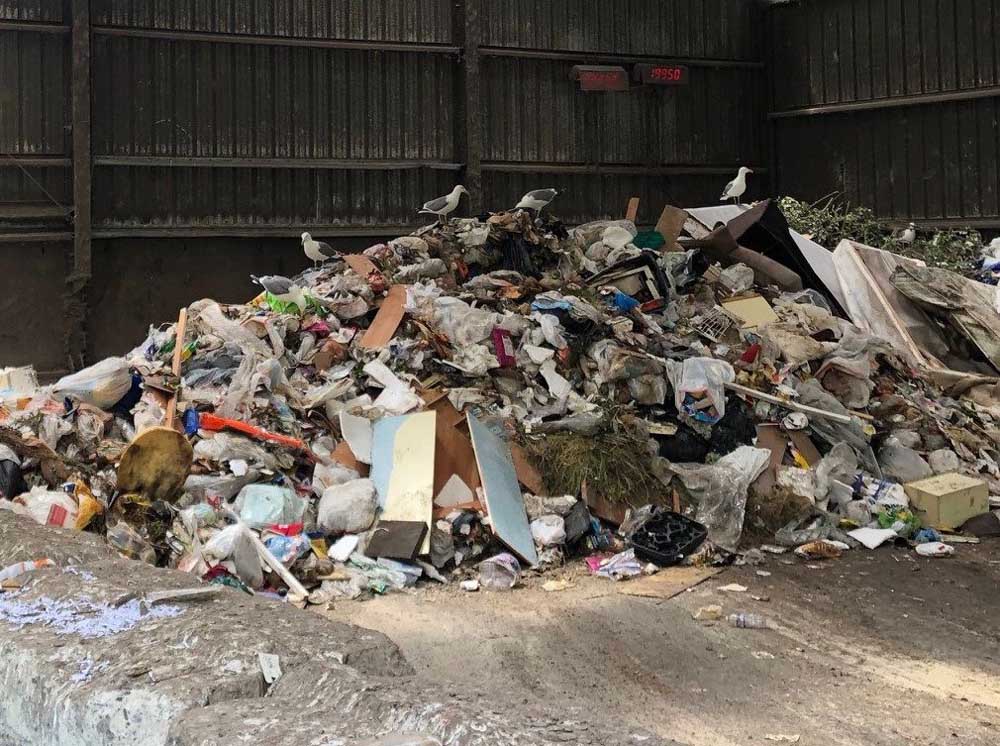Seagulls pose problems at Astoria Transfer Station
Published 2:15 pm Wednesday, June 26, 2019

- Gulls perch on garbage at the Astoria Transfer Station. The state noted issues with the number of birds at the facility last year, but the company has since installed systems to keep the population down.
How many seagulls are too many?
At the Astoria Transfer Station, the state’s tolerance for the birds tapped out at 50.
During an unannounced inspection last year by the Oregon Department of Environmental Quality, inspectors noted dozens of gulls outside the building, picking through garbage and perched inside where garbage is dumped and transferred.
Recology Western Oregon, the company that collects garbage and recycling for Astoria, faced a violation of a state statute which dictates solid waste must be stored and collected in ways that prevent the spread of disease to people or animals, and prevents hazards to service or disposal workers or the public.
“Seagulls are considered vectors and the quantity observed at the Astoria Transfer Station indicates that more needs to be done to prevent vector production and sustenance,” Chris Papinsick, a state solid waste compliance specialist, wrote in a warning letter to Recology.
Inspectors noted an estimated 50 to 75 gulls.
Recology appears to have fixed the problem with the installation of a grid wire system on the roof of the transfer station intended to deter nesting and roosting. A similar system is already in place at the company’s Tillamook Transfer Station.
When the state reinspected the Astoria facility last month, the gull population had dropped by about half.
But the company is continuing to work with a consultant to improve methods of deterring the birds, said Carl Peters, general manager for Recology’s operations.
Ubiquitous presence
Gulls are a ubiquitous presence in the Pacific Northwest, especially on the North Coast.
They chase off bald eagles from roosting sites near Ecola State Park. They drop in wherever food and people congregate. They coast alongside cars crossing the Astoria Bridge, wings stretched taut as they ride the wind, sometimes swiveling their heads to look a driver in the eye. One gull, Crackers, makes regular appearances at the Warren House Pub in Cannon Beach.
For Recology, gulls are “generally a nuisance” and impact housekeeping around the transfer station, Peters said.
For Astoria, the gulls the transfer station attracts receive a reference in a manual for employees monitoring landfill gas at CMH Field, which shares space off Williamsport Road with the transfer station.
Gulls are mentioned several times in the monitoring manual, always as hazards.
Technicians should wear appropriate clothing, safety glasses and hard hats while working in the area and “be very aware of the hazards associated with the multitudes of seagulls that perch on or fly around the grandstands,” the manual noted.
Turns out gulls are not good at holding onto things, or keeping other — even less pleasant — things inside.
“The seagulls flying above and perched on top of the grandstand present a falling object hazard as the seagulls tend to drop excrement and other items they are carrying,” the manual continued.
But for at least one research project on Oregon’s central and south coast, colonies of western gulls were used to assess possible conflicts with offshore renewable energy projects. The work was part of a larger research effort to gauge seabird distribution along the Oregon Coast and how they use marine habitat.
Since gulls feed on fish in ocean surface waters and fly at various altitudes over the ocean on their quest for food, researchers gleaned lessons about how to site wind turbines and lessen the impact to birds, wrote Rob Suryan, a former associate professor with Oregon State University who was involved in the research in past years.
Rachael Orben, an assistant professor and senior researcher with the university’s Hatfield Marine Science Center in Newport, has continued the work of tracking western gulls at a colony in the Cape Perpetua Marine Reserve near Yachats, and at other sites farther south.
While gulls tend to return to places where they’ve had the most success in finding food, they range far and wide and across a variety of habitats to feed. Even when garbage and human food is available, it is hardly the only stuff they’re eating. Just recently, one gull from among the 50 researchers are tracking at a colony visited the Waldport dump for the first time.
“We’ve only been able to track a handful of birds and all the birds we’re tracking tend to do different things,” Orben said.
‘Fairly far for food’
Over the years, Recology has had to deal with gulls at transfer stations and trash facilities located beyond the coast. In 2012, the company employed a falconer to frighten away gulls dining at a composting facility outside of Portland, among a suite of measures to deal with bad odors at the site.
The Astoria Transfer Station has always had gulls, though the notice from the Department of Environmental Quality last year was the first time the state had noted any issues with the birds since Recology began operating the facility in 2011.
Some research indicates garbage is a way gulls supplement their diets during energy-intensive periods — when they’re raising chicks, for instance — and at times when other, more natural prey might be scarce or in decline. But Orben’s research has not dialed into these kinds of specifics yet.
“They’re able to go fairly far for the food that they need,” she said, “and they are pretty flexible so it’s hard to tell how important the human subsidies” — the garbage or restaurant handouts — “are to their success.”





